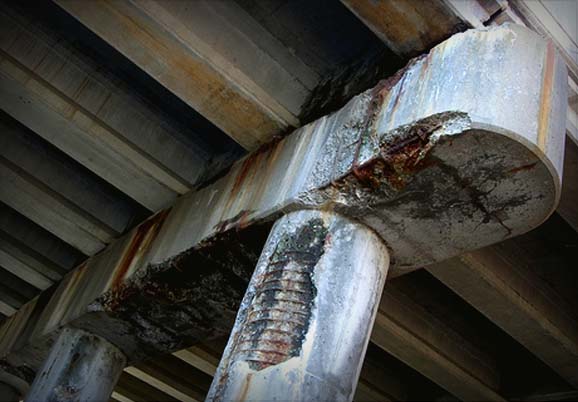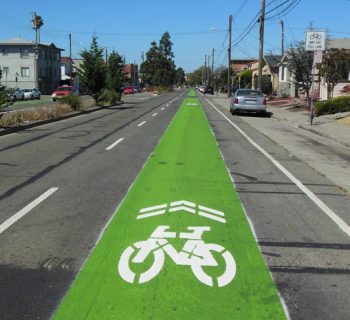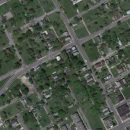DETROIT—Area residents agree that public infrastructure is deteriorating in southeast Michigan, but differ sharply on how to address the issue, according to a survey conducted in 2012. The results were published by the Southeast Michigan Council of Governments earlier this month.
The survey also brings to light some common misconceptions about how infrastructure improvements are funded, particularly when it comes to transportation, and highlights some geographic differences of opinion regarding funding of infrastructure in the region.
Results were compiled for each of the agency's constituent counties — Livingston, Macomb, Monroe, Oakland, St.Clair, Washtenaw and Wayne — as well a separate breakdown for the city of Detroit.
Only 28 % of residents region-wide are willing to pay higher taxes to fund public transportation.
According to the survey, 75 percent of residents "strongly agree" or "somewhat agree" with the statement "the condition of Southeastern Michigan's infrastructure is deteriorating." Only 6 percent disagree. The vast majority of respondents drew a connection between infrastructure conditions and economic prosperity, with 81 percent of residents agreeing "we must reinvest in the region's infrastructure so we can prosper economically," and 77 percent agreeing "investing more on maintenance of our infrastructure will save us money in the long run."
By a wide margin, the road system is the biggest infrastructure concern for southeast Michigan residents, the study finds (with one exception: Detroit residents cite improved public transportation as the highest need, with roads coming in second). Over three-quarters of residents feel our road system is "fair" or "poor" while only 4 percent rate it as "excellent."
Residents, however, are not so eager to pay more for better roads; 63 percent would prefer to live with current levels of traffic congestion, and 55 percent would rather carpool than pay more to reduce traffic congestion or fund road improvements.
Still, in most jurisdictions over two-thirds of residents would rather widen existing roads or add new ones than pay more to expand public transportation. Only Detroit and Washtenaw County oppose this trend, with a majority (63 percent, and 54 percent, respectively) wanting to pay more for transit. This may reflect higher utilization rates in these areas, SEMCOG says.
Alarmingly, although most people claimed to understand where road funding comes from, a high number of respondents — as many as one-half for certain questions — gave incorrect responses when asked how our road system was funded. Fifty-one percent of people believe that most road funding comes from local property taxes (it actually comes mostly from fuel taxes and vehicle registration fees). This belief was least prevalent in Washtenaw County (39 percent).
About half of people (53 percent) would rather pay for roads "based on miles driven" rather than "amount of fuel used," according to SEMCOG. The less-populous counties of St. Clair and Monroe indicate a slightly greater degree of support (56 and 55 percent, respectively) for a shift from fuel taxes to a tax on vehicle miles traveled.
Opinions on mass transportation showed the greatest variation across the region. Most people feel that present funding for bus service is "not enough" or "about right". However, a significant number in Oakland County (21 percent) feel that buses receive "too much" funding, a belief held by 16 percent in Macomb County and 10 or fewer percent elsewhere. In Detroit, 75 percent say "not enough" is being spent on mass transportation.
Despite these numbers, only 28 percent region-wide are willing to pay higher taxes to fund public transportation.
Interest in transit use also varies considerably across the region, with 70 percent of Detroit and 78 percent of Wastenaw residents "willing" to use public transit.
SEMCOG did not address levels of satisfaction with different bus systems (Detroit's DDOT, Washtenaw County's The Ride, and others) in our balkanized transportation network, nor did it compare the "willingness" of respondents to degree transit-dependence.
Overall, residents are highly satisfied with the region's water and sewer infrastructure. A majority rate their services as "excellent" or "good" with only 3 percent rating service as "poor." Significantly, residents are for the most part open to making small sacrifices, such as refraining from dishwashing during peak demand or enacting restrictions on lawn watering, to save on water and sewer costs, the survey finds.
Seventy-nine percent of Washtenaw residents are "willing to pay more" in taxes and fees to fund efforts to reduce water pollution, while narrower majorities prevail in other jurisdictions.
According to a statement, the agency "will use the results of this survey to complement a myriad of planning activities, most notably development of the 2040 regional transportation plan and to inform its policies and actions."
Attend public engagement events from 3-5 p.m. Wednesday, May 8, at Washtenaw Community College or from 5-7 p.m. Tuesday, May 14, at City of Warren.










